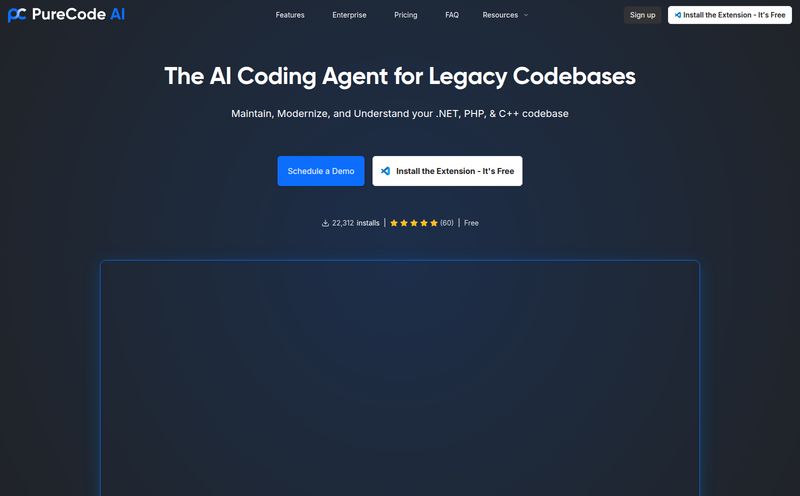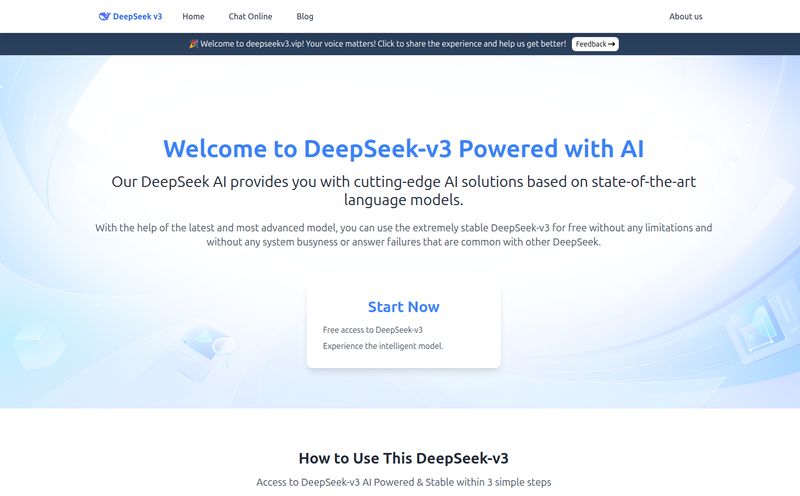We’ve all been there. You’re deep in a REM cycle, dreaming of finally deploying that one feature, when your phone screams with the fury of a thousand angry sysadmins. An instance is down. A customer is reporting a vague, unhelpful error. The next few hours are a blur of frantic debugging, trawling through logs, and wishing you’d chosen a simpler profession, like professional alpaca shearing.
This soul-crushing cycle of reactive firefighting is what the industry politely calls “operational burden.” I call it the death of innovation. Every hour a developer spends wrestling with AWS configurations or answering the same support ticket for the tenth time is an hour they’re not building the future of your product.
For years, we’ve just accepted this as the cost of doing business in the cloud. But what if we didn’t have to? I’ve been keeping a close eye on the new wave of AIOps tools, and one name that popped onto my radar recently is Cirroe AI. It makes a bold promise: to automate away the most painful parts of AWS management and incident response. But does it deliver? Let’s find out.
So, What Exactly is Cirroe AI? (And Why Should You Care?)
Think of Cirroe as an AI-powered co-pilot for your entire operations stack. It’s not here to replace your DevOps team, but to give them a massive force multiplier. It aims to handle the repetitive, time-consuming tasks that clog up your team's day, freeing them to focus on the hard problems.
From what I can gather, its brain is split into two major functions:
- AWS Tamer: It abstracts away the glorious complexity of the AWS console. Instead of clicking through a dozen menus to spin up resources, you can use simple prompts. It’s like having a senior SRE on call to handle deployments, but without the six-figure salary and strong opinions on YAML formatting.
- Support Ticket Slayer: This part got my attention. Cirroe integrates with your ticketing systems (they mention all the major ones) and your internal knowledge bases. When a customer ticket comes in, it reads it, understands the problem, finds the solution in your docs, and… just resolves it. Automatically.
If that sounds a little like magic, I get it. The proof, as they say, is in the production environment.
The Promised Land: A World Without DevOps Toil
The Cirroe website paints a pretty rosy picture, contrasting a 'Without Cirroe' world with a 'With Cirroe' one. It’s the classic before-and-after, and frankly, it targets some very real pain points that keep engineering managers up at night.
From Weeks of Languishing Tickets to Instant Responses
The biggest drag on any dev team is context switching. When a support ticket lands on a developer's plate, they have to drop what they're doing, load a whole new problem into their brain, solve it, and then try to remember what they were working on. Cirroe’s pitch is to sever this connection entirely for common issues.
By hooking into your knowledge base—be it Confluence, Notion, or some shared Google Doc graveyard—it synthesizes information to provide immediate answers. A customer asks how to reset their API key? Cirroe finds the doc and sends it. An error code pops up that’s been solved before? Cirroe provides the fix. The promise here isn’t just speed; it’s about protecting your development team’s most valuable asset: their focus.

Visit Cirroe
Taming the AWS Beast, One Prompt at a Time
I’ve worked with AWS for over a decade, and I still sometimes feel like I need a Ph.D. in acronyms to get anything done. The idea of managing resources across multiple zones or regions with a simple text prompt is… appealing. Very appealing.
This lowers the barrier to entry for junior developers and reduces the chance of manual configuration errors. We’ve all seen a production outage caused by a single misclicked checkbox in the security group settings. By automating deployment through a tested system, Cirroe aims to make those kinds of oopsies a thing of the past. More importantly, it promises to turn complex deployments from a half-day project into a coffee-break task.
Turning Operational Chaos into Actionable Insights
Here’s a subtle but powerful benefit they highlight: getting “structured insights from operational issues.” This is huge. Most of the time, incidents are resolved, and the knowledge is lost, trapped in a Slack thread or a Jira ticket that nobody will ever read again. Cirroe claims to perform root cause analysis in seconds. By structuring the data from these events, you can start to see patterns. Why does this one service fail every month? Are 80% of our support tickets about the same confusing UI element? This turns firefighting into a strategic feedback loop to actually improve your product.
Let’s Get Real: The Setup, Safety Nets, and Hurdles
Alright, let's ground ourselves. No tool is a perfect, drop-in solution. The website is upfront about a few things that any seasoned pro would expect.
First, it requires integration with your existing systems. This isn’t a con, its a prerequisite. It needs access to your ticketing platform and knowledge base to do its job. The setup might take a bit of initial effort, but that’s the price of admission for this kind of automation. You have to plug in the super-smart toaster for it to make your toast.
Second, and this is something I actually see as a massive positive, is that potentially dangerous actions require operator approval. This is the responsible way to implement AI. The last thing anyone wants is an AI deciding to, on its own, ‘optimize’ a production database by deleting it. The Slack integration provides a crucial “human in the loop” checkpoint. Cirroe can suggest a fix or a deployment, but a human has to give the final nod. It's not a leash; it's a safety harness.
What’s the Damage? A Look at Cirroe's Pricing
Now for the question on every CFO’s mind. How much does it cost? Well, this is where things get a bit mysterious. The pricing page on their site currently leads to a 404 error—a classic startup move that screams “we’re probably still figuring it out.”
However, the documentation and homepage mention a “pay-as-you-go” model. In my experience, this is often a good thing for teams. It suggests you’ll be paying for what you actually use, rather than being locked into a high-tier subscription for features you don’t need. It allows you to scale your costs with your usage. The real question isn’t the price, but the ROI. If Cirroe saves one developer just 10 hours a month, it has likely already paid for itself many times over. The call to “Schedule a Meeting” suggests they’re going for a more consultative sales process, which is common for tools that integrate this deeply into a company's workflow.
My Final Take: Is Cirroe AI a Revolution in a Box?
I’ve seen a lot of tools promise to solve the DevOps headache. Most just add another layer of complexity. Cirroe AI, however, feels different. It’s not just about dashboards or better analytics; it’s about genuine automation of the tasks that developers hate the most.
The dual focus on both infrastructure management and customer-facing incident response is smart. It tackles the problem from two different angles, creating a compounding effect. Faster ticket resolution means happier customers and fewer interruptions. Simpler AWS management means developers ship features faster and with more confidence.
Is it a silver bullet? Of course not. You’ll still need smart engineers. You’ll still have complex, novel problems that no AI can solve. But Cirroe isn’t trying to solve those. It's trying to clear the board of all the boring, repetitive, and soul-crushing tasks so your team can focus on what they were hired to do: build amazing things. And from where I'm standing, that's not just a good idea—it's the future of software development.
Frequently Asked Questions about Cirroe AI
- How does Cirroe integrate with my stack?
- Cirroe is designed to connect with the tools you already use. It has integrations for all major ticketing systems (like Jira, Zendesk, etc.), popular knowledge bases (like Confluence and Notion), and uses Slack for real-time operator notifications and approvals.
- Is Cirroe AI completely autonomous?
- No, and that's a key feature. While it can resolve many issues autonomously, any action that could be considered 'dangerous'—like modifying production infrastructure—requires explicit approval from a human operator via a Slack prompt. It's an AI assistant, not an AI dictator.
- What kinds of AWS tasks can Cirroe automate?
- It's built to simplify and automate a range of AWS operations. This includes deploying new resources across different availability zones or regions, managing existing infrastructure, and helping to debug issues, all through simple text-based prompts.
- What is the pricing model for Cirroe AI?
- Cirroe uses a pay-as-you-go pricing model, which means you pay for the resources and actions you use rather than a flat monthly fee. While specific pricing isn't public yet, this model is typically flexible and cost-effective for teams of all sizes.
- Can Cirroe help with long-term improvements?
- Yes. Beyond just resolving immediate incidents, Cirroe provides structured insights from operational issues. It helps perform quick root cause analysis, allowing your team to identify recurring problems and make strategic improvements to your systems and products.
Conclusion
In a world where developer time is the most precious commodity, tools like Cirroe AI are more than just a convenience. They represent a fundamental shift in how we approach operations. By offloading the toil and automating the mundane, we’re not just making developers more efficient; we’re making their jobs more enjoyable and innovative. And that’s a win for everyone—from the engineer on call to the customer on the other end of the support ticket.
Reference and Sources
- Cirroe AI Official Website: https://cirroe.ai/



